View in Chinese (PDF) HomeJournal ContentsIssue Contents
Volume 10 Number 1
©The Author(s) 2008
Investigating the Tallgrass Prairie
Abstract
This article describes an investigation of a tallgrass prairie undertaken by 3- through 7-year-old children in a preschool and a combined kindergarten/first-grade classroom at a Midwestern university. The teaching teams were curious about how these two age groups would explore their questions about the prairie—how their questions would differ by age group, what interested them most, and whether they would come to different levels of understanding. The children's involvement in this investigation is illustrated through photographs, samples of their work, and explanations. The article compares the studies in each classroom, discussing how children addressed similar questions and the effects of collaboration on their social and emotional development.
Little School on the Prairie
University Primary School is an early childhood program affiliated with the Department of Special Education at the University of Illinois at Urbana-Champaign. It serves the mission of the university by providing opportunities for research, teaching, and service. The school is a demonstration site for the Project Approach. The school is located in central Illinois, near a reclaimed tallgrass prairie park. Twenty-six preschool (3 through 5 years old) and 26 kindergarten/first-grade students (5 through 7 years old) engaged in this investigation. Each class has one head teacher and two graduate student teaching assistants. The teaching staff plans collaboratively within teams once a week, and the director conducts meetings of the whole staff monthly.
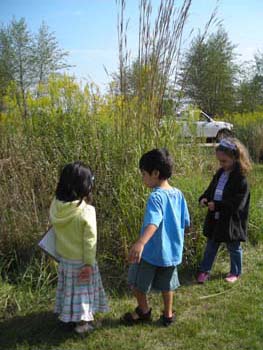
Figure 1. Students visit the prairie.
Preliminary Planning
Many children at University Primary School (UPS) stay in the program and move from preschool to the kindergarten/first-grade classroom. During the spring of 2006, we observed a strong interest in insects, plants, and animals among the children. In the fall of 2007, and for the first time at UPS, both head teachers decided to involve the children in an investigation of the same topic: the Illinois tallgrass prairie. We collaborated on planning the essential understandings that we hoped the children would acquire. Both teaching teams developed a list of similar essential understandings and big ideas:
- We live near the prairie; Illinois is the prairie state.
- Attributes of the prairie can be compared to those of other habitats on Earth.
- The habitat of the prairie is conducive to certain types of plants and animals, and those life forms are interdependent.
- There is a relationship between the climate and the prairie habitat.
- Humans affect the environment and play a role in taking care of the prairie.
- Many disciplines are involved in the study of prairies (e.g., biology, environmental science, geology, geography, social sciences).
These essential understandings and big ideas were noted on our weekly lesson plans and kept in mind as we designed the learning experiences that would help the children answer their questions about the prairie.
Phase 1: Sharing Memories and Experiences
In each classroom, we began the project by sharing a memory about taking a walk through the local reclaimed prairie park. We described what we saw there, including tall grasses, birds, and deer. In the K/1 class, the deer intrigued the children. Children shared their own stories, then brainstormed what they already understood or believed about the prairie.
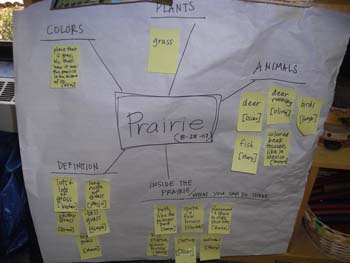
Figure 2. Preschool student concept web 1 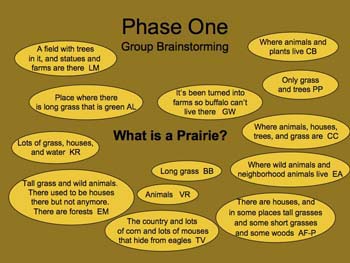
Figure 3. K/1 student concept web 1.
To explore the definition of a prairie, the teachers asked the children to predict what they would not find on the prairie. Their initial ideas follow:
|
|
|
The children drew pictures and wrote stories about their prairie experiences. The preschoolers represented their initial understandings through paintings, collages, and a collaborative mural painting.
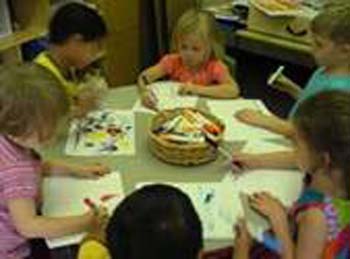
Figure 4. Preschool memory drawings of the prairie. 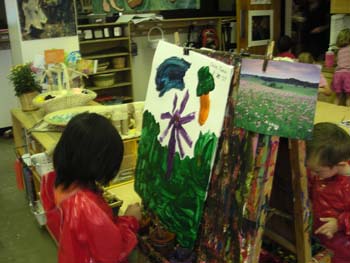
Figure 5. Preschool easel paintings of the prairie. 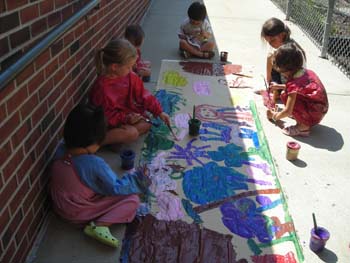
Figure 6. Preschool collaborative mural about their initial ideas about the prairie.
Both classes arranged a field trip to the local restored prairie park. All of the children sketched and photographed the environment around the school building and predicted whether they would or would not see similar items on the prairie. The children also surveyed one another’s predictions of what they would see on the prairie. They compiled the list of predictions to check off on the field trip. Predictions give voice to the children’s current knowledge and understandings.
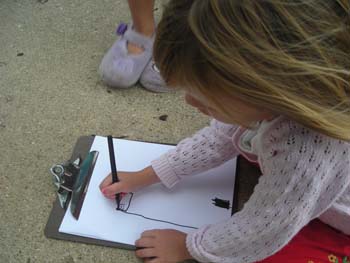
Figure 7. Preschool observational drawings of our school environment. 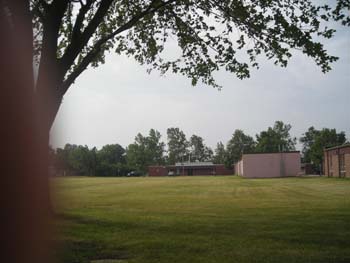
Figure 8. Photograph taken by a preschooler of our school environment. 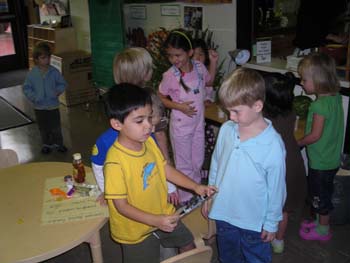
Figure 9. Preschoolers surveying predictions of what they thought they would see on the prairie field trip. 
Figure 10. A K/1 child sketched her predictions of what she would not see on the prairie.
During the field trip, children sketched their observations, counted and measured, and took field notes. They also checked to see whether their predictions were accurate. Back in the classroom, the children compared their observations and formulated questions to investigate further.
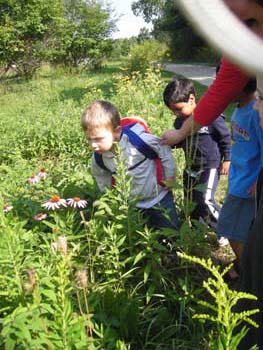
Figure 11. Preschoolers observe plants on the trip to the prairie. 
Figure 12. Preschoolers check their predictions. 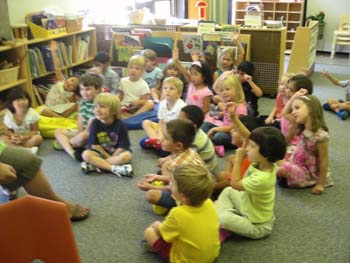
Figure 13. Preschoolers debrief and share information after their field trip.
Phase 2: Study Group Investigations and Fieldwork
Small Study Groups
The children in the two classrooms sorted their new questions into categories, which then became the basis of small study groups (see Table 1).
| Preschool | K/1 |
|---|---|
Plant Study Group
|
Plant Study Group
|
Animal Study Group
|
Animal Study Group
|
Fire Study Group
|
Insects
|
Water Study Group
|
Weather/Climate Study Group
|
Prairie Attributes Study Group
|
In both classrooms, children expressed an interest in prairie plants and animals. In the preschool, other study groups developed based on their questions about prairie fires and water on the prairie. The K/1 children’s question categories also included insects, weather/climate, and a comparison between the prairie and the desert. The K/1 head teacher had a colleague who teaches second grade in Tucson, Arizona. To help the children understand the relationship between attributes of the prairie and the environment that we live in, she arranged for an e-mail correspondence between her students and her colleague’s students in Arizona—that is why the Prairie Attributes Study Group became the desert/prairie comparison group.
The children planned various ways that they could find answers to their questions:
- interview an expert
- read library books and other print resources
- do an Internet search
- conduct an experiment
- observe
- create surveys and questionnaires
Interviewing Experts
Teachers play a critical role in helping children answer their questions by facilitating access to experts. Across both classrooms, the process for interviewing experts remained the same: We asked children what questions they had for each expert. Then we asked them to make predictions about the responses that the expert might give for their questions. Although children in the small study groups may initially generate questions for an expert, at large group meeting times, we also invited other children to pose additional questions for the expert. A scientist from the State Natural History Survey talked to the preschool and K/1 plant study groups, and a mammalogist (specialist in mammals) talked to both animal study groups. The preschool children in the fire group interviewed firefighters from the Fire Service Institute, and the water group interviewed an aquatic ecotoxicologist from the State Natural History Survey, as well as a biologist from the Department of Veterinary Biosciences at the University of Illinois. K/1 students in the weather/climate study group interviewed a scientist from the State Water Survey, and the desert/prairie comparison group communicated by e-mail with a second-grade class in Tucson, Arizona. Three entomologists from the State Natural History Survey answered the children’s questions about insects on the prairie. We are fortunate to live in a large university community where we have access to experts in so many related fields of study.
In preparation for these interviews, children formulated questions and predicted the experts’ answers (see Table 2).
| Questions | Predicted Answers | Expert’s Answers |
|---|---|---|
| Can there be hurricanes? | No. | No, hurricanes occur near oceans. |
| How many inches of rain fall in one year? | Just a little—not too much. | Two to four feet—less than in the forest. |
| What does lightning do to the prairie? | It makes fires and burns the prairie plants. | |
| Are there tornados? | Yes | Yes |
Engaging children in discussion about their predictions prior to an expert’s visit gave the children opportunities to articulate their knowledge and assumptions, and to debate their rationales for making their predictions. Some members of the animal study group, for example, were quite sure that prairie dogs lived on the Illinois prairie; some even reported having sighted them. When the mammalogist met with the children, she told them that prairie dogs live on the short and medium grass prairies of the western United States, but not on the Illinois tallgrass prairie. Children’s prior understandings conflicted with new information. They debated among themselves about the likelihood of prairie dogs surviving in the short grass (mowed grass) on the local tallgrass prairie. They researched photos of prairie dogs and their tracks and compared those to what they had observed on the tallgrass prairie. They read about the habitat of prairie dogs online and in library books (http://en.wikipedia.org/wiki/Prairie_dog; Prairie Dogs, by Sandra Markle).
In the preschool room, one child said dolphins lived on the prairie. In large group discussion, other children disagreed and gave their reasons:
CP: There’s no water to eat or drink.
BB: Dolphins are too large to fit, and the lake would be too small. If dolphins were like this [He used his hand to give the sign of the dolphin jumping], their heads couldn’t go deep enough into the water.
The discussion continued. One child said that dolphins needed to live in saltwater. The children debated whether or not the water in the prairie was freshwater or saltwater. The teachers were intrigued with their debates and shared some of the children’s conversations with the parents. One of the parents led them to the aquatic ecotoxicologist. This expert brought a salt conductivity meter, and the children went back to the prairie and measured the salt content of the prairie stream. They also measured the depth of the water. With that concrete proof that the water does not have enough salt or enough depth, the children agreed that no dolphins live on the prairie.

Figure 14. Preschoolers discuss the likelihood of dolphins living on the prairie. 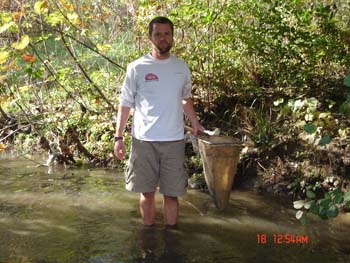
Figure 15. The ecotoxicologist measures the depth of the water.
Surveys and Questionnaires
To gain a deeper understanding about the characteristics of a prairie and how it compares to other habitats, the K/1 desert/prairie comparison study group compiled a list of questions for a second-grade classroom in Tucson, Arizona, in the Sonoran Desert. The two classes corresponded via e-mail, sharing questions, assumptions, and answers with one another:
K/1: We think there is no water on the desert.
2nd: Actually, there is water here. In the summer, we have a monsoon season where it rains very hard and the desert plants store up a lot of water for the rest of the year. It is not a lot of water compared to Illinois. We have dry riverbeds. Most children who have grown up in Tucson have only seen dry riverbeds (we call them washes) and have never seen water in a river!
K/1: We think it’s practically all sand there, nothing else.
2nd: Sand is everywhere, and the wind blows it everywhere, too! Our soil is really only sand. This creates a lot of dust, and sometimes we have dust devils, where the dust swirls around like small tornados. Sometimes the highways have to shut down because of these dust storms. But in our desert, we have a lot of plants that are growing in the sand.
K/1: We think there are birds there that we’ve never seen before.
2nd: Yes, we have many birds that you do not have. Birds that we often see are hummingbirds, doves, hawks, falcons, roadrunners, and quail. We do see cardinals once in a while in the mountains, though.
2nd: Do you have jackrabbits or bunny rabbits?
K/1: We have bunny rabbits.
2nd: Do you have any mountains?
K/1: No, the land is very flat here.
2nd: Do you grow pumpkins on the prairie?
K/1: People grow pumpkins in their gardens or on farms, but we don’t find them growing wild on the prairie.
The K/1 group compiled the answers in a notebook, then used the information to represent what they learned. They made models of the prairie habitat and created a Venn diagram animal game.
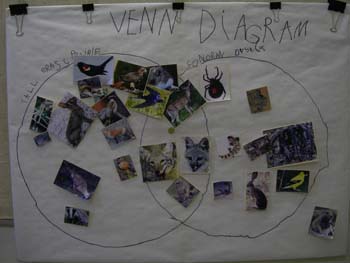
Figure 16. K/1 Venn diagram game.
Experiments
The preschool prairie fire group wondered what happened to plants during a prairie fire. They dramatized and shared their predictions about what would and would not burn. One child (CE) reenacted how the plants might burn and shrink to the ground, and another child (BB) responded.
BB: Yeah. It goes into the ground so it can help new ones to grow.
CE: Yeah, and it won’t get too tall.
Children then planned an experiment to find out which of the items would burn. They gathered the materials, decided on the procedures, and recorded the results during the experiment.
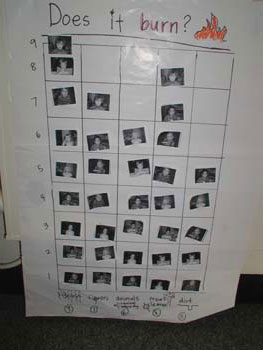
Figure 17. Prediction chart of what would burn. 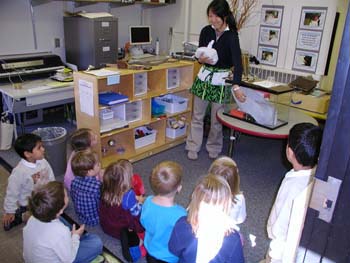
Figure 18. Preschool fire experiment.
The children were surprised that some, but not all, grasses and flowers burned. After discussion, some children planned a second experiment, focusing on whether there was a difference between brown, green, dry, and wet plants. The second experiment proved their hypotheses to be true. The dry, brown plants burned much more easily than the green, wet plants. The children were pleased to discover that dirt did not burn either time, as they had predicted. This result confirmed that animals and plant roots that were underground were safe during the fires. The children represented this understanding through drawings of the prairie plant cycle and sequence sheets.
After learning from the expert that prairie plant roots can be twice as long as the height of the aboveground plant, members of the K/1 plant study group planted grass seed. After the grass had sprouted and gained some height, group members measured the above and belowground parts of the plants, confirming, on a small scale, the fact that plants had deep roots—exactly what the expert demonstrated.
Print Resources
Preschoolers in the prairie plant group were curious about what kinds of plants grow in the prairie. Their initial ideas included roses, sunflowers, and tall, tall grass. The children took a field trip to the prairie and met with an expert who identified specific prairie plants. The children also looked at a poster from the Illinois Department of Natural Resources, in which they identified plants that they had seen on the prairie. The K/1 plant study group used plant samples for measurement and comparison. They measured how tall the plants were in comparison to their heights. They, too, used print resources (prairie plant guides) to identify and label plants and plant parts.
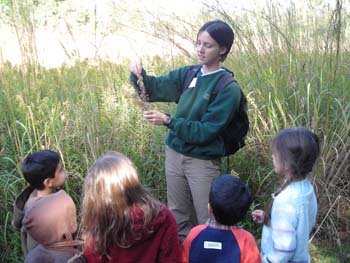
Figure 19. Expert at a nearby lake discusses plants. 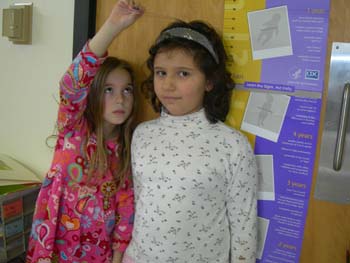
Figure 20. K/1 students measure one another to compare their height with the height of the prairie grass.
Observation
Several children from both classes made a second visit to the reclaimed prairie park to make further observations and ask questions of plant experts. Some children visited independently with their families and reported their findings back to the class. Guided by a plant specialist, the K/1 plant study group revisited the prairie and made connections between what they had read in plant guides with the real plants growing in the prairie. They demonstrated a deeper understanding of the prairie by seeing the real plants. For example, the children read about the compass plant but were excited to find that they could actually identify it by its north-south pointing leaves. Likewise, they learned to identify members of the mint family by their triangular stems. Throughout the field trip, students cried out, “I found another one!”
Reporting
In the K/1 class, as the small study groups conducted their investigations, children shared their learning with their peers. In this way, the members of each group became “experts” on their particular topic. They discovered, however, that they needed information from other groups in order to complete their investigations. The weather/climate study group, for example, interviewed the plant study group about the effects of lightning on the prairie plant growth. Children discovered that the content they were learning in their small study groups was related to what others were learning in their small groups.
Interaction between Classrooms
Children discovered the richness of interaction between the two classrooms because the teachers organized activities that enabled similar study groups to talk with each other. The plant and animal study groups overlapped, and preschool and K/1 students discussed their ideas and questions together before the experts visited. They clearly benefited from listening to one another and sharing their prior knowledge and predictions.
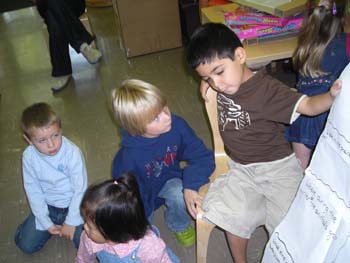
Figure 21. Preschoolers share information with each other.
Phase 3: Culminating and Debriefing Events
Preschool
To begin Phase 3, the study groups reviewed the work they had done and the answers they had found to their questions. They shared their work with the rest of the class and revisited their original webs. The children found that they could answer, with great detail, most of the initial questions they had raised. The children created a second web to represent the data and knowledge that had been gained through the project.
Teachers held meetings with the study groups to plan how they would share their new knowledge and understandings with others. The children chose what they thought was most important and interesting to share. They then helped set up displays and examined each other’s work.
- The plant group displayed their 3-D representation of various prairie plants, labeled with name, height, and interesting facts. The plants were accurate representations of height and included roots underground. The children also worked collaboratively on a prairie mural, showing detailed observational paintings of prairie plants.
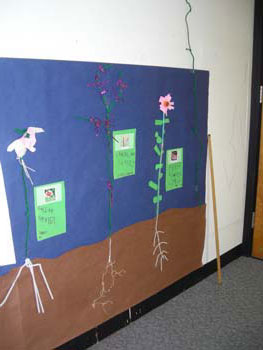
Figure 22. Preschoolers made a 3-dimensional mural of prairie plants. 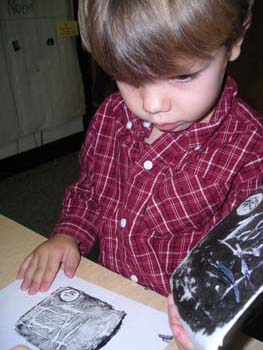
Figure 23. A preschooler makes a print of prairie grasses. 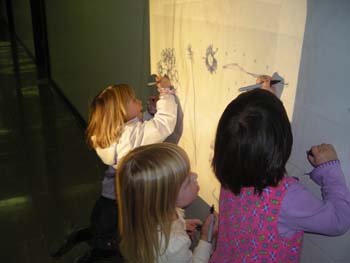
Figure 24. Preschoolers enlarge their drawings for a mural. 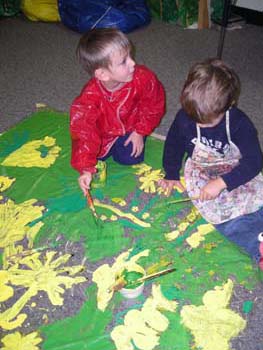
Figure 25. Preschoolers paint their prairie mural.
- The animal group displayed 3-D representations of prairie animals, made out of boxes and junk. They also made animal clue books to go along with the animal representations. Here is an excerpt from the book:
When I am a baby, I eat milk.
As I get older, I eat grass and wildflowers.
I am brown with white spots.
What am I?

Figure 26. Boxes and junk representations of deer. 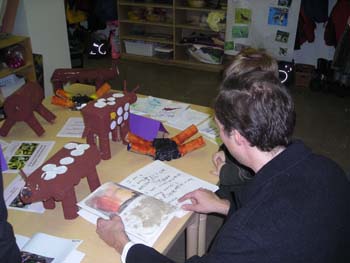
Figure 27. Prairie animal clue books.
- The water group set up a table for visitors to see water paramecium under a microscope. The teacher used a special microscope with the computer to magnify the paramecium.
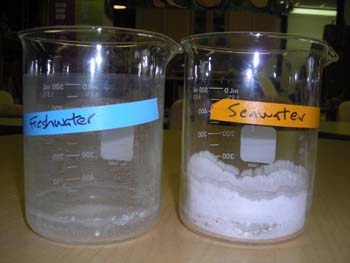
Figure 28. Preschool saltwater experiments. 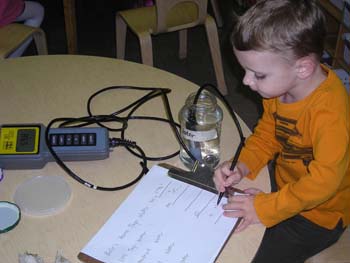
Figure 29. Preschoolers using the salt conductivity meter.
- The fire group displayed all the prairie fire tools (McLeod, Fire Swatter, Water Pack, Pulaski) that they had made using boxes and junk, along with their observational drawings and informational books about each tool. They also made a short video demonstrating how the tools were used to put out prairie fires. The group also displayed a sequence chart illustrating what happens to plants during the prairie life cycle, including prairie fires.

Figure 30. A child wears a 3-D representation of a water pack. 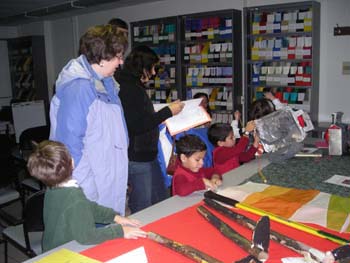
Figure 31. Display of fire tools. 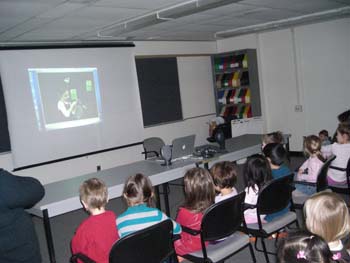
Figure 32. Fire tool demonstration shown on video to parents.
The parents were invited to a culminating event to see the project work. The children hosted their families as they showed them the various displays and answered questions.
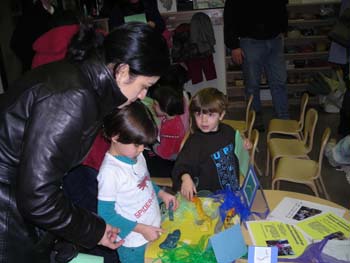
Figure 33. Children host parent visitors. 
Figure 34. Preschoolers show the K/1 students their felt mural of the prairie plants. 
Figure 35. Preschoolers show the K/1 students their “deer.”
K/1
Children in the K/1 classroom took significant control as they planned and executed the ways they would share their learning at the culminating event. They were clearly enthused to communicate with parents, visitors, and the preschool classroom. Each group chose a slightly different way to represent what they had discovered, but all were interactive.
- The plant group worked on a collaborative vinyl mural with the insect group, depicting their close-up view of the tallgrass prairie. Group members also planted grass seed and measured the aboveground and belowground growth. For the culminating event, they created stations where visitors could measure their own heights, comparing them with the grass heights, and they offered prairie plant seeds to be planted and taken home by visitors.
- In addition to the collaborative vinyl mural, the insect group displayed insect artifacts with microscopes and magnifiers for visitors to use.
- The animal group collaborated with the desert/prairie comparison group to create a Venn diagram game, giving participants the opportunity to guess which animals live in which environment. They included a guide where participants could check the validity of their guesses. Group members also collaborated on a life-size deer fawn model made of boxes and junk. The problem solving required for this creation alone provided rich experiences. The children were continually baffled by how to make the structure stand and balance while still adhering to the life-size measurements. Their persistence paid off, though. That group created a variety of boxes and junk animal representations, as well as written reports about a number of prairie animals.
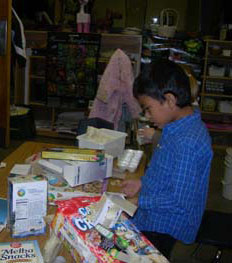
Figure 36. K/1 students work on their boxes and junk fawn.
- The desert/prairie comparison group, in addition to collaborating with the animal group on the Venn diagram game, used information from their Tucson e-mail pen pals to create habitat dioramas and to write and draw reports about the differences and similarities between the desert and the prairie.
- The weather/climate group collected information from an expert and chose to write and video record a weather newscast about the prairie and the effects of prairie fires. They interviewed the plant group as well to incorporate their findings regarding what happened when lightning strikes on the prairie.
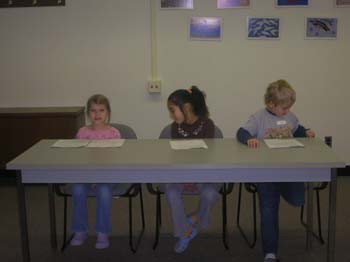
Figure 37. K/1 Weather/climate group doing their newscast: “On the prairie, it rains two to four feet in one year. That would come up to my elbow!”
- Members of several groups collaborated on two prairie board games that incorporated questions and answers about attributes of the prairie. During the culminating event, students taught their parents and other visitors how to play the games and check the accuracy of their answers. Here are some examples of their questions:
True or False: Some spiders live on the prairie. True
Are forests the same as prairies? No
Can prairie grass be taller than a person? Yes
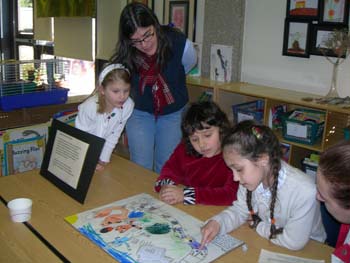
Figure 38. K/1 students and parents play a prairie board game.
Each class hosted the other class to share what the children had learned through their investigations as well. Children asked one another questions that indicated they were listening and connecting the information they had already learned to the other group’s learning.

Figure 39. Preschoolers and K/1 children visited each others’ culminating events.
Highlights: Social Competencies and Collaboration
At the end of the project, the teachers reflected together and noticed that there were similarities and differences in the way the preschool and K/1 children experienced the investigation and came to understand the big ideas and essential understandings that we had planned. We also noticed the remarkable growth in social competencies and had some insights about our role in engaging the students in collaboration.
Similarities
In both classrooms, living things were of great interest to the children. They both chose to study animals and plants and enjoyed making representations of all types of plants and animals that they discovered living on the prairie. They were also interested in doing experiments to demonstrate knowledge gained from talking with the experts. For example, in both classes, they tried experiments with plants to find out more about how plants could grow and survive on the prairie.
Differences
The development of the project differed in interesting ways between the two classes. In the preschool classroom, although the content across the study groups was related, the preschoolers did not necessarily make transparent connections. For example, the fire group learned that plants with deep roots are better suited for surviving prairie fires. The plant group was also investigating plant parts, including roots. However, preschoolers did not seem to verbalize the relationship between the deep roots of the plants and the type of plants that are found on a prairie.
In the K/1 classroom, children shared informally with others what they were learning in their study groups. Children who were not part of a particular study group frequently brought in information or artifacts for that group. Whereas the preschoolers were focused on their singular study group, many of the K/1 students, and especially those who were returning from the previous year, saw relationships between what they were learning across all study groups to the larger topic of the prairie. Questions remain: Can the teachers of younger children help them make connections more explicitly? Or is the ability of children to understand relationships to larger essential understandings a developmental process?
The K/1 children readily engaged in friendly debate. When a child posed a hypothesis or idea (e.g., “The prairie has lots of trees.”), other children challenged that child’s thinking, supported by facts learned through other parts of the investigation. At the same time, K/1 children appeared comfortable stating their, sometimes outrageous, ideas and engaging in the debate. In the preschool, we observed children more readily accepting their classmate’s erroneous thought (e.g., “Dolphins live in the creek on the prairie.”). Children at this developmental level appeared to need the physical, not just the logical, proof of a fact.
Enhancing Social Competencies through Collaboration
Through collaborative work, children in the two classrooms grew better acquainted and were forced to give up some of their previous assumptions about one another. K/1 students, for example, appeared initially surprised that the preschoolers had ideas and information to share. Quickly, though, they included them as equals in discussions and collaborative projects, adding to the richness of the study.
We observed children from both classes as they worked together on murals. There was a genuine camaraderie among the children. When instructions and advice were necessary, they were offered kindly. The collaborative work often required negotiation, such as where to work on the mural, which colors to use, or whether or not it is acceptable to “spatter” the paint. Children from both classrooms grew in their ability to compromise and work as a team.
Children in both classrooms assumed responsibility for their own learning through this investigation. They grew in their ability to ask questions, listen to their peers and adults, negotiate through disagreements, and stand up for their convictions.
Conclusion: Relation to Essential Understandings
Children achieved learning in all of the areas of essential understandings that the teachers had predetermined. Teachers, too, gained new knowledge. We articulated some of our new understandings:
- There is a prairie zone around the entire earth; it is called by different names in different places—pampas in South America, steppes in Russia, and veld in South Africa.
- The definition of “prairie” is “A large area, found outside the tropics, with grassland and occasional trees as natural vegetation. The term was originally applied to the prairies of North America where rainfall is low and summer temperatures are high.” The word comes from the French word for meadow.
- Animals go underground in burrows to keep safe during a prairie fire.
- Prairie plant roots are twice as long as the aboveground plant.
- Prairie fires are essential to the life of a prairie.
- Burr oaks are trees that can survive prairie fires.
- Buffalo used to live on the Illinois prairie, but prairie dogs never lived in Illinois.
We agree that this project proved valuable to the children in their educational, social, and emotional development. The investigation of the Illinois tallgrass prairie brought our young children closer to understanding the physical and natural world around them. We look forward to collaborating on projects in the future.
Additional Resources
Experts
- Firefighter
- Aquatic ecotoxicologist
- Biologist from Veterinary Biosciences Department
- Scientist from the State Natural History Survey
- Scientist from the Illinois State Water Survey
- Mammalogist
Field Studies
- Meadowbrook Prairie
- Homer Lake Prairie
- Fire Service Institute
Print Sources
- Illinois Department of Natural Resources: Books, posters
- Anita Purves Nature Center: Science Tubs
Web Sites
- Meadowbrook Prairie Restoration
http://www.prairienet.org/meadowbrook/ - The Tallgrass Prairie in Illinois
Illinois Natural History Survey
http://www.inhs.uiuc.edu/~kenr/tallgrass.html - Grand Prairie Friends
http://www.prairienet.org/gpf - Prairie in Illinois Web site from the Illinois State Museum
Activities and Resources
http://www.museum.state.il.us/muslink/prairie/htmls/act_res.html - Build a Prairie (online game) http://www.bellmuseum.org/distancelearning/prairie/build/
- Fire Management (the "guys" responsible for conserving prairies—setting/controlling the fires)
http://www.fws.gov/fire/who_we_are/ - Tallgrass Prairies
http://www.tallgrass.org/tgptour/tourlaunch1.htm
Author Information
Marcia Burns has been head teacher in the kindergarten/first-grade classroom at University Primary School at the University of Illinois at Urbana-Champaign for the past two years. Previously, she taught in kindergarten through third-grade classrooms in the Urbana public school system. She was introduced to the Project Approach as a graduate student at the University of Illinois.
Marcia Burns
University of Illinois at Urbana-Champaign
University Primary School
Children's Research Center
51 Gerty Dr.
Champaign, IL 61820
Telephone: 217-333-3996
Email: mvburns@uiuc.edu
Sojin Chi is the head teacher in the preschool classroom at University Primary School at the University of Illinois at Urbana-Champaign. Prior to teaching at University Primary School, Sojin taught early childhood methods courses at a private university in Decatur, Illinois. Since taking a class on the Project Approach as a graduate student at the University of Illinois, Sojin has engaged children in project work in various programs.
Sojin Chi
University of Illinois at Urbana-Champaign
University Primary School
Children's Research Center
51 E. Gerty Drive
Champaign, IL 61820
Telephone: 217-333-3996
Email: s-yi3@uiuc.edu
Nancy B. Hertzog is an associate professor in the Department of Special Education and the director of University Primary School at the University of Illinois at Urbana-Champaign. Her research focuses on curricular approaches and teaching strategies designed to differentiate instruction and challenge children with diverse abilities. Specifically, she has studied teachers' implementation of the Project Approach in classrooms with both high-achieving and low-achieving children. She has been the chair of the Early Childhood Division of the National Association for Gifted Children and served as co-chair of the Education Commission of the National Association for Gifted Children. Dr. Hertzog has written Web-based curricular guides that detail project investigations of preschool, kindergarten, and first-grade students that have won national recognition from the National Association for Gifted Children. She has published in the Journal of Curriculum Studies, Gifted Child Quarterly, Journal for the Education of the Gifted, Roeper Review, Teaching Exceptional Children, Early Childhood Research and Practice, and Young Exceptional Children.
Nancy B. HertzogUniversity of Illinois at Urbana-Champaign
Department of Special Education, Rm. 288
College of Education
1310 S. Sixth St.
Champaign, IL 61820
Telephone: 217-333-0260
Email: nhertzog@uiuc.edu

